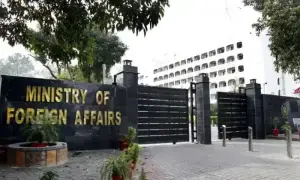ISLAMABAD: The disputed Siachen glacier, where an avalanche hit early Saturday, is billed as the world's highest combat zone, but atrocious weather conditions have claimed more lives than actual fighting.
The 77-kilometre-long glacier traverses the Line of Control, the de facto border separating Indian- and Pakistan-controlled Kashmir, at a height of over 6,300 metres.
Combat between the nuclear-armed foes has claimed few lives but frostbite, avalanches and driving blizzards, which can sweep men into crevasses, are deadly for the thousands of soldiers deployed there.
Winter temperatures plummet to minus 70 degrees Celsius with blizzards gusting at speeds of 160 kilometres per hour.
India in 1984 occupied the key areas on the glacier, including the heights, and Pakistan immediately responded by deploying its own forces. They fought a fierce battle in 1987, raising fears of all-out conflict.
New Delhi says it cannot withdraw its troops from the glacier until Islamabad recognises its troop positions, fearing Pakistan will move its soldiers forward in the event of an Indian pull-out.
Experts have said there are some Indian 5,000 troops on the glacier while Pakistan has less than half that number, but there are no recent estimates.
Islamabad says the presence of Indians on the glacier threatens a strategic Sino-Pakistani highway located 180 kilometres away.
Early on Saturday, an avalanche smashed into a remote Pakistan army camp on the glacier, burying alive at least 100 soldiers. Troops were frantically trying to find signs of life in the deep snow.
Most of the time on Siachen, the bad weather prevents any troop movement and despite the heavy deployment, clashes are generally low-level skirmishes involving a few dozen troops.
Since both sides deployed troops on Siachen, casualties from sporadic clashes have not exceeded 150 on either side.
Maintaining a military presence on remote Siachen exerts a heavy financial toll.
India reportedly spends more than 40 million rupees daily on its Siachen deployment -- a figure that does not include additional wages and bonuses.
All Indian soldiers who complete a tour of duty on the glacier are awarded the “Siachen Pin” as a mark of fortitude.
The Kashmir region -- of which Siachen is a part -- is divided between Pakistan and India and is claimed by both in full. It has triggered two of the three wars between the neighbours since 1947.
Siachen is close to four of the world's 14 peaks over 8,000 metres -- K2, Broad Peak, Gasherbrum I and Gasherbrum II -- all of which are on the Pakistani side of the frontline.
































